Welcome to our eleventh annual round-up of girls with guns calendars. This one almost slipped my mind until I suddenly realized it was November 30! Still, given the all-round awfulness of the year, what better way to pass the time, then to look forward to 2021? The sooner it gets here, the better, I’d say… We do bid farewell to one of the icons of the genre, with Hot Shots having retired after their 2020 edition – maybe they knew what was coming this year! And sadly, it seems the pandemic and resulting shutdown has taken its toll, with definitely a smaller number available this time round. Still, below, you’ll find prices (generally excluding shipping), sample images and links to purchase for all the calendars we could find. We’ll add more if we see them, feel free to email us if you know of any others
TAC GIRLS
TacGirls.com – $18.95
“The Tactical Girls® 2021 Bikini Gun Calendar is our Best of the Best Edition, with 13 months of the best photos from our 13 year history. Many of these shots were originally our cover photos or hugely popular fan favorites. For example, June 2021 is our 2010 cover model, Erin Banks with an M249 SAW, Vanessa Swainston, the 2013 cover with an Surgeon .338LM is January 2022 and our cover is Robin Raider from October 2019 with a DRD Paratus with a shoutout to the Marines. Every 2021 Best of the Best Tactical Girls Calendar comes with a 12X24 mini Poster insert with the cover girl Robin Raider on the front and a collection of other great shots on the reverse. It slides out of the calendar, no tearing or staples to pull. The remaining memorable shots bring you 13 months the best photos with some of the world’s most exotic weaponry in realistic tactical settings. The 2021 Tactical Girls Calendar Best of the Best Calendar includes the KRISS Vector SMG, the Cadex CDX-30 Guardian Precision Rifle and the Kel-Tec KSG Tactical Short bullpup Shotgun. All of these, along with a variety of carbines, battle rifles, machine guns, pistols and sniper rifles, all with gorgeous models in realistic settings.”

LIBERTY BELLES
LibertyBellesUSA.com – $14.49
:It’s the year 1777 and King George III has lost control of his naughty children. Even Captain America’s ass can’t compare to these Belles of the Revolution. Get ready for another year as they pose for liberty and the right to bear arms, shoulders, and legs. Each month, the ladies portray important female figures (both famous and obscure) who nonetheless fought along side the men during the war that birthed our nation. The designs for this 2021 calendar is inspired by Benjamin Franklin’s “Poor Richard’s Alminac.” It features a Lunar calendar, a measurement tool on the side, and a bit of important wisdom from our second president & founder, John Adams, and —of course as always— girls with firearms. This calendar also showcases the dates for some of the most infamous battles of the revolution. Only Federally observed holidays are included in this calendar. The calendar also includes a 12″ x 18″ centerfold pull out poster.”
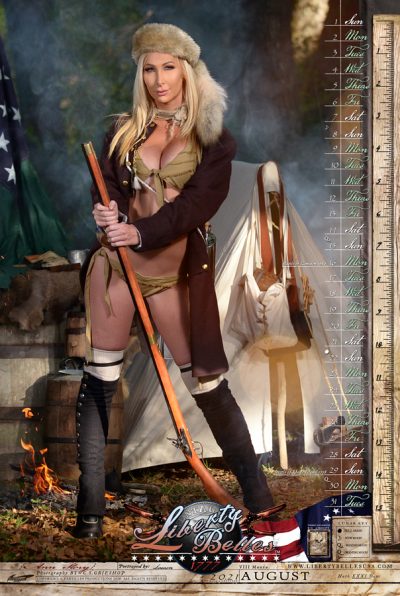
GUNS AND GIRLS
GunsAndGirlsCalendar.com – available through Amazon, $13.92
The website doesn’t seem to have been updated, but there does appear to be a new edition of this one available. Though maybe “Guns N Girls” is different from ‘Guns % Girls”? “The 2021 GUNS AND GIRLS wall calendar is packed with beautiful pin up models and many of today’s most popular weapons, everything from handguns to AR15s. This 16 month large format calendar is 17″x 28″ when hung up and a perfect gift for any Armed Service Member, Police Officer or Shooting Enthusiast. Also includes a bonus 12 month poster inside giving you two calendars in one package!”

ZAHAL GIRLS
zahal.org – $25.90
“We are proud to present our new ZAHAL Girls Calendar which combines the best of both sexy models and the tactical gear world. No gun bunnies! Only IDF veterans. Size is Approx A3. No gun bunnies! Only IDF veterans.”

WEAPON OUTFITTERS
In a cunning marketing plot, this one is available in two versions. Safe For Work ($19,95): “The safe for work version, features classic Weapon Outfitters landscape and portrait photography with a variety of models. Featuring: Alex Zedra, fan-favorite Eva, Silvia Kitsune, KC, with special appearances from the Tacticats, Vanellope Von Floof, and more!”
Not Safe For Work ($29.95): “Twelve months of Weapon Outfitters After Dark (WOAD) spice! Not compliant with HR departments, nor endorsed by jealous girlfriends and wives. Featuring a published models including but not limited to: Casey, Calypso, Tabi, and Aurora! The 2021 NSFW calendar is a mix of studio and landscape photography. ”

DILLON PRECISION
DillonPrecision.com – $14.99
“The Dillon Precision 2020 Calendar is in stock and ready for your reloading room, office, or wherever you want to display the World’s Finest Models and Firearms.”
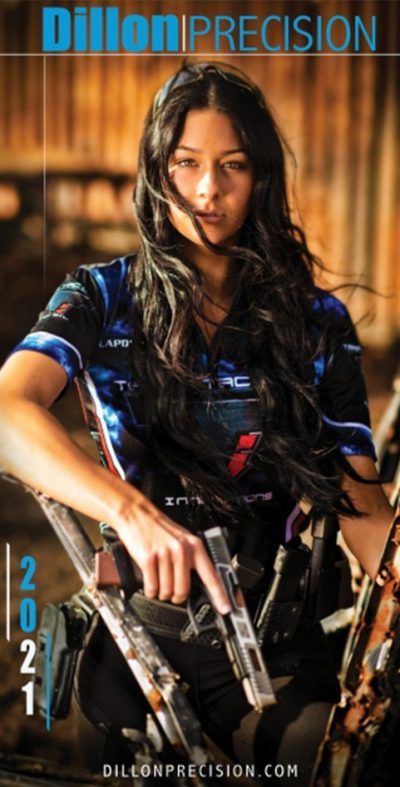
ALPHA GUN ANGELS
aga-guns.com – $14.99
“The traditional “Alpha Gun Angels” Calendar has arrived! This time we took our Calendar’s photםshoot to the next level! We gathered our BADASS squad to a crazy photoshoot in a CHOPPER! Every month will feature one of our GORGEOUS and BADASS girls with our sponsored products!”
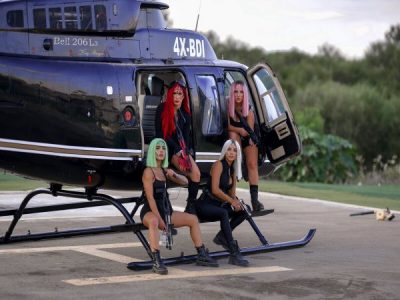
WILD DAKOTA GIRLS
wilddakotagirls.com – $14.95
Not strictly a GWG calendar, but I think there’s enough overlap – as well as going by the pic of the bonus poster below – that it may be of interest. :) This is a fairly long-running charity effort, with the proceeds going to fight breast cancer since 2017.
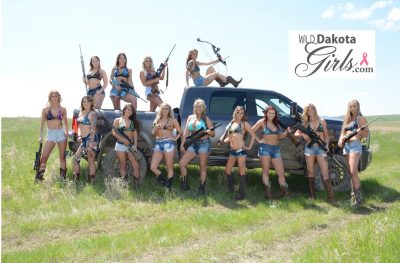





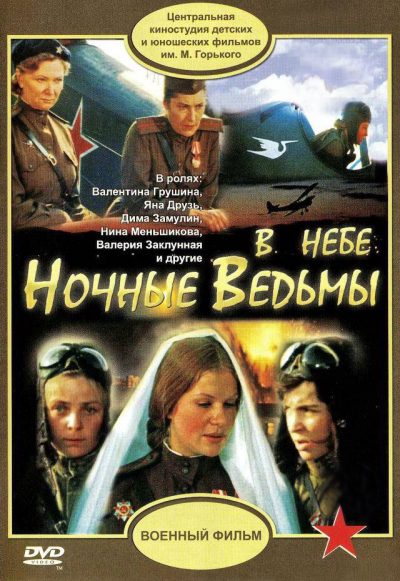
 After an incident where she shoots dead a woman armed only with a toy gun, Marie (DeCianni) quite the police force to become a housewife. However, her husband, Barry (Spadaro), has some dodgy friends, in particular, Nadi (Regina, who also co-wrote this), a man with ties to organized crime. Barry falls behind on payments, and an unfortunate car “accident” befalls him: a recent large life-insurance policy named Nadi as the beneficiary. It’s all very shady, as Marie’s old police captain (Session) admits. However, there is just not enough evidence for the authorities to take action. That’s not an issue for Marie, however, who decides to take revenge for the loss of her husband, against Nadi and his associates.
After an incident where she shoots dead a woman armed only with a toy gun, Marie (DeCianni) quite the police force to become a housewife. However, her husband, Barry (Spadaro), has some dodgy friends, in particular, Nadi (Regina, who also co-wrote this), a man with ties to organized crime. Barry falls behind on payments, and an unfortunate car “accident” befalls him: a recent large life-insurance policy named Nadi as the beneficiary. It’s all very shady, as Marie’s old police captain (Session) admits. However, there is just not enough evidence for the authorities to take action. That’s not an issue for Marie, however, who decides to take revenge for the loss of her husband, against Nadi and his associates.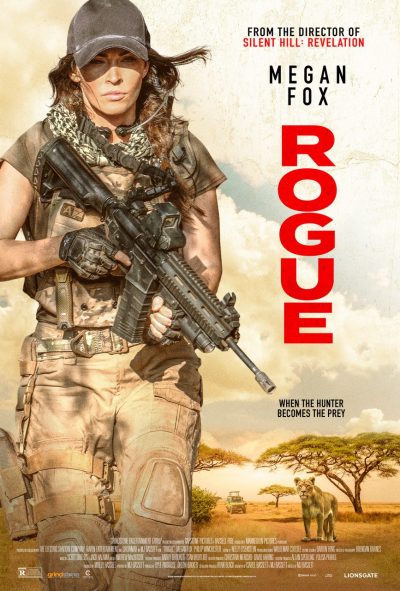 Megan Fox may not exactly be the first name which comes to mind when you think “battle-hardened mercenary leader.” But if you can get past your preconceptions, she’s definitely not the worst thing about this. We’ll get to what
Megan Fox may not exactly be the first name which comes to mind when you think “battle-hardened mercenary leader.” But if you can get past your preconceptions, she’s definitely not the worst thing about this. We’ll get to what 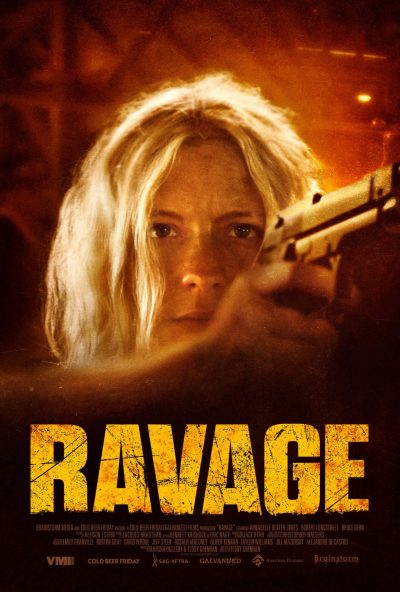 Wildlife photographer Harper Sykes (Dexter-Jones) is out in the wilderness of the “Watchatoomy Valley” [fictitious, but apparently located somewhere in the Virginias], when she stumbles across a group of men brutally attacking a victim. She snaps a few pics before fleeing the scene, but her attempts to report the incident to the authorities backfire immediately, and she quickly finds herself at the mercy of their leader, the appropriately-named Ravener (Longstreet). He explains the victim was a scout for big business, whose predations would destroy the natural environment, and so had to be stopped. Now, Harper is next in line. However, she is not the innocent and helpless victim they think. Even when she has the chance to escape, Harper decides to stay in the valley, and take vengeance on Ravener and the rest of his clan.
Wildlife photographer Harper Sykes (Dexter-Jones) is out in the wilderness of the “Watchatoomy Valley” [fictitious, but apparently located somewhere in the Virginias], when she stumbles across a group of men brutally attacking a victim. She snaps a few pics before fleeing the scene, but her attempts to report the incident to the authorities backfire immediately, and she quickly finds herself at the mercy of their leader, the appropriately-named Ravener (Longstreet). He explains the victim was a scout for big business, whose predations would destroy the natural environment, and so had to be stopped. Now, Harper is next in line. However, she is not the innocent and helpless victim they think. Even when she has the chance to escape, Harper decides to stay in the valley, and take vengeance on Ravener and the rest of his clan.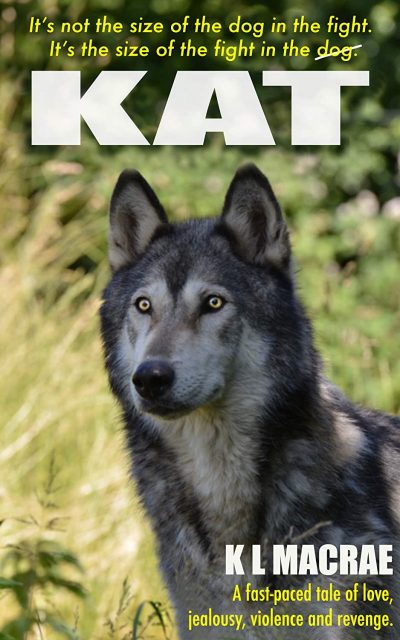 Firstly, I’m still trying to figure out the relevance of the cover (right). With a heroine named Kat, why is there a dog pictured? It’s not as if she even owns one at any point. The “size of the fight” line… well, tenuous at best. I should probably have listened to my instincts and skipped this frankly implausible tale, about a teenage girl who is smart, attractive and a black-belt martial artist with 34E breasts. Yet she ends up having to get work as a stripper, a job at which she is naturally brilliant (thanks to adopting a pseudo-Xena persona), in order to keep her alcoholic mother out of debt. She breaks the arm of a particularly unpleasant customer, Alex, an act which gets her the attention of Alex’s business partner. He runs McKenzie Personal Security, and offers Kat a job as a trainee bodyguard.
Firstly, I’m still trying to figure out the relevance of the cover (right). With a heroine named Kat, why is there a dog pictured? It’s not as if she even owns one at any point. The “size of the fight” line… well, tenuous at best. I should probably have listened to my instincts and skipped this frankly implausible tale, about a teenage girl who is smart, attractive and a black-belt martial artist with 34E breasts. Yet she ends up having to get work as a stripper, a job at which she is naturally brilliant (thanks to adopting a pseudo-Xena persona), in order to keep her alcoholic mother out of debt. She breaks the arm of a particularly unpleasant customer, Alex, an act which gets her the attention of Alex’s business partner. He runs McKenzie Personal Security, and offers Kat a job as a trainee bodyguard. Turns out that The Asylum are not the only company who makes mockbusters. As its alternate name makes clear, this Lifetime TVM is clearly a knock-off of the title mentioned above, down to the same, basic plot. Two teenage girls begin doing crime, largely for the excitement. A teacher becomes aware of their exploits and decides to blackmail them for his own benefit, by making them escalate their activities. This brings them increasingly under the scrutiny of both authorities and criminal elements, not to mention parental disapproval, eventually leading to a climax where all these aspects cross paths. As my
Turns out that The Asylum are not the only company who makes mockbusters. As its alternate name makes clear, this Lifetime TVM is clearly a knock-off of the title mentioned above, down to the same, basic plot. Two teenage girls begin doing crime, largely for the excitement. A teacher becomes aware of their exploits and decides to blackmail them for his own benefit, by making them escalate their activities. This brings them increasingly under the scrutiny of both authorities and criminal elements, not to mention parental disapproval, eventually leading to a climax where all these aspects cross paths. As my  Another example which illustrates the difference between Western and Japanese approaches to education. For here we have “Class Black”, a group containing a baker’s dozen of female pupils, eleven of whom have been tasked by a mysterious group to assassinate the twelfth, with the person who does it being given absolutely anything they want by the organizers. Yeah, it’s not
Another example which illustrates the difference between Western and Japanese approaches to education. For here we have “Class Black”, a group containing a baker’s dozen of female pupils, eleven of whom have been tasked by a mysterious group to assassinate the twelfth, with the person who does it being given absolutely anything they want by the organizers. Yeah, it’s not 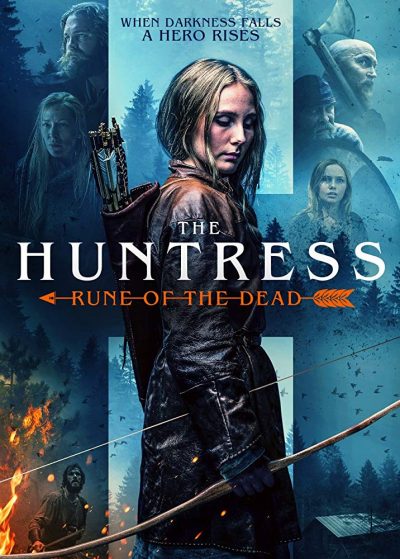 In 9th-century Scandinavia, teenage girl Runa (Stefansdotter) lives deep in the woods, with her mother, Magnhild (Idah), blind grandfather Ragnvald (Beck) and younger sister Bothild (Lyngbrant). Father Joar is notable by his absence, having gone off on a Viking raid to seek fortune for the family, and is now well overdue. However, he did at least train Runa to be a markswoman with the bow. Problems start when she finds a wounded warrior, Torulf, lying in the forest, and brings him back to their cabin, much against Magnhild’s wishes.
In 9th-century Scandinavia, teenage girl Runa (Stefansdotter) lives deep in the woods, with her mother, Magnhild (Idah), blind grandfather Ragnvald (Beck) and younger sister Bothild (Lyngbrant). Father Joar is notable by his absence, having gone off on a Viking raid to seek fortune for the family, and is now well overdue. However, he did at least train Runa to be a markswoman with the bow. Problems start when she finds a wounded warrior, Torulf, lying in the forest, and brings him back to their cabin, much against Magnhild’s wishes.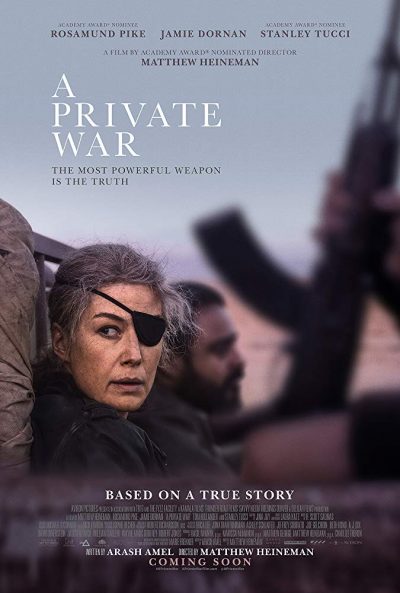 The profession of journalist is not exactly well-regarded by many people these days. So it’s nice occasionally to be reminded that they can still potentially be action heroes, risking their own lives in pursuit of the truth. In this case, it’s Marie Colvin (Pike), a foreign correspondent for London’s Sunday Times newspaper, who lost an eye while covering the civil strife in Sri Lanka, leading to a piratical eye-patch for the rest of her career. Most people would treat that as a sign from the universe to look into a change of profession. But Colvin was made of sterner stuff, despite a hellacious case of post-traumatic stress disorder, with which she largely coped by drinking heavily. So she and photographer sidekick Paul Conroy (Dornan) continue to venture into the world’s hot-spots, whether it’s Iraq, Libya or Syria. There, they expose the terrible human cost that the conflicts have on the local population, without apparent concern for their own safety.
The profession of journalist is not exactly well-regarded by many people these days. So it’s nice occasionally to be reminded that they can still potentially be action heroes, risking their own lives in pursuit of the truth. In this case, it’s Marie Colvin (Pike), a foreign correspondent for London’s Sunday Times newspaper, who lost an eye while covering the civil strife in Sri Lanka, leading to a piratical eye-patch for the rest of her career. Most people would treat that as a sign from the universe to look into a change of profession. But Colvin was made of sterner stuff, despite a hellacious case of post-traumatic stress disorder, with which she largely coped by drinking heavily. So she and photographer sidekick Paul Conroy (Dornan) continue to venture into the world’s hot-spots, whether it’s Iraq, Libya or Syria. There, they expose the terrible human cost that the conflicts have on the local population, without apparent concern for their own safety.